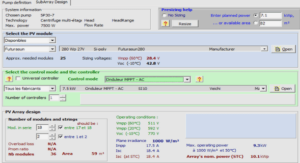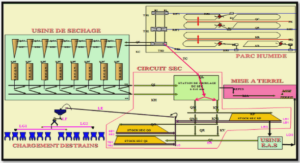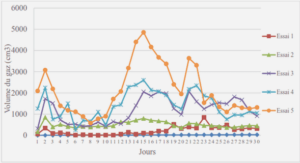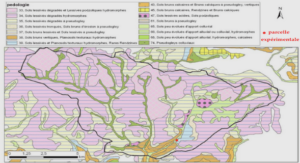RÉSUMÉ
L‘ écologie du paysage sonore est une discipline de recherche très récente. Elle permet d’étudier les relations complexes entre les communautés d‘animaux, les dynamiques géophysiques et les systèmes anthropiques. En tant que nouveau domaine de recherche,le développement de bases théoriques et de mesures standards est nécessaire pour identifier et quantifier les processus dans le paysage sonore et les interactions de ce dernier avec les systèmes naturels et anthropiques. Par l‘étude des patrons présents à l’intérieur des paysages sonores, nous pouvons également répondre à des questions liées à la structure de la communauté (patrons spatiaux) et à sa dynamique (patrons temporels) tel que la répartition des espèces, leur abondance et leurs interactions biotiques au sein de la communauté.
L‘expertise que nous avons développée dans cette thèse peut être regroupée sous deux axes principaux de l‘écologie du paysage sonore:
1) le développement de bases théoriques et de mesures d’évaluation et
2) l’évaluation des interactions entre le paysage sonore, la structure et la dynamique des communautés animales.
Premièrement, nous évaluons l‘utilisation d‘ indices acoustiques pour différencier systématiquement les contextes du paysage sonore aquatique et terrestre. Les indices acoustiques permettent une quantification standard des propriétés du paysage sonore et ils fournissent une interprétation écologique intuitive de leur variation. Nous utilisons des enregistrements acoustiques des communautés d‘oiseaux et d‘ ensifères dans différentes forêts, tourbières, marais, terres agricoles, zones de végétation urbaine et cours d‘eau pour représenter les différents contextes du paysage sonore.
En utilisant un modèle de forêts aléatoires, nous comparons la précision de différents indices acoustiques à celle du spectre de puissance du signal pour discriminer différents événements du paysage sonore. Nous montrons que la combinaison d‘indices acoustiques particuliers se rapproche à la haute performance du spectre de puissance pour différencier systématiquement les contextes de paysage sonore. Nous introduisons également un nouvel indice acoustique basée sur la taille de compression des fichiers audio numériques.Deuxièmement, nous développons un nouveau cadre théorique pour étudier les effets du paysage sonore sur les modèles d‘assemblage des communautés animales.Nous utilisons une combinaison de modèles de simulation et d‘études sur le terrain pour tester les hypothèses suivantes:
1) l‘ hétérogénéité acoustique augmente avec le nombre d‘espèces dans les communautés d‘ensifères des écosystèmes tempérés et
2) l‘hétérogénéité acoustique d‘ un assemblage d‘ ensifères en milieu naturel est plus élevée que celle de communautés assemblées de façon aléatoire. Nous démontrons que l‘hétérogénéité acoustique augmente avec la richesse en espèces dans les communautés naturelles. Ceci signifie que des mesures particulières d‘hétérogénéité acoustique pourraient être utilisées pour évaluer rapidement la biodiversité dans les communautés d‘ensifères. Nous démontrons également que la pente de la relation entre l‘ hétérogénéité acoustique et la richesse spécifique dans les communautés naturelles ne diffère pas significativement de celle des communautés aléatoires.
Ce résultat suggère que la concurrence pour l‘espace acoustique est assez faible à l‘ intérieur des communautés d‘ensifères actuelles et qu‘ il ne semble pas y avoir d‘influence sur l‘assemblage des communautés locales.Troisièmement, nous proposons un cadre mathématique simple pour étudier les effets du paysage sonore sur les interactions prédateur-proie dans les milieux aquatiques.
Notre modèle lie les captures de poissons à la sensibilité auditive des espèces et au niveau de bruit ambiant dans les écosystèmes d‘eau douce. Nous justifions que l‘activité d‘alimentation des proies dépend de la probabilité d‘être détectée par leurs prédateurs.Des simulations de modèles et des résultats préliminaires sur le terrain suggèrent que les proies peuvent profiter d‘une augmentation du bruit ambiant sous l‘eau pour se nourrir activement en minimisant le risque de prédation encouru. D‘ailleurs, les captures de proies par unité d‘effort étaient presque trois fois plus élevées lors de jours bruyants (jours de fin de semaine) comparativement aux jours plus calmes (jours ouvrables), ce qui suggère une hausse de l‘activité alimentaire en présence de bruit ambiant élevé.
The soundscape as an acoustic resource
One of the classical definitions of « niche » is the sum of all environmental conditions that allow a species to satisfy its minimum requirements; thus, niche is defined as an « n-dimensional space » or « hyper-volumei ‘ (Hutchinson 1944, 1957). In a particular n-dimensional space, species should differ in their use of vital resources in order to locally coexist – otherwise they would face competitive exclusion (Hutchinson 1978). Niche theory provided conceptual models designed to investigate how many and how similar coexisting species could be within a given community (MacArthur and Levins 1967; MacArthur 1969, 1972).The soundscape can be conceived as a three-dimensional space (determined by sound intensity, frequency, and time) shared by singing, calling, or stridulating animaIs.The soundscape is an ecosystem resource that cohabiting species have to share. The acoustic niche hypothesis (ANH), proposed by Krause (1987), postulates that interspecific acoustic interference in animal communities may trigger competition for the acoustic space that would prompt organisms to adjust their signaIs to exploit vacant niches and thus minimize spectral or temporal overlaps with interspecific vocalizations.This competition may influence community structure (spatial patterns) and dynamics (temporal patterns) at different scales.The first evidence of acoustic partitioning in an animal community was shown in 2002 in the cicada community of a Mexican rainforest. Organisms showed species-specific spectral and temporal patterns that minimized their acoustic overlap (Sueur 2002). Studies since then have shown how sorne bird, anuran, insect, and even fish communities also seem to partition their acoustic space (Lüddecke et al. 2000; Chek et al. 2003; Planqué and Slabbekoorn 2008; Henry and Wells 2010; Schmidt et al. 2013; Ruppé et al. 2015; Fi‘gure 4), providing strong support for the acoustic niche hypothesis. However, many questions remain unanswered regarding the patterns of this partitioning and its impact in shaping community assemblages. How can we quantify this partitioning to compare its patterns between different communities? How many dimensions (frequency, amplitude, time) and what degree of overlap is permitted before partitioning occurs? Is the acoustic resource a strong (exclusive) competitive factor in current communities? Does the competition for the acoustic space constitutes a selective force in animal communities? How does this competition interact with other environmental factors to shape community structure?
A consequence of the interspecific acoustic specialization to partition the acoustic space is that the acoustic heterogeneity of a community is predicted to increase with the number of vocalizing species within it. A heterogeneous acoustic space will be filled with signaIs varying in spectral and temporal patterns, while a homogenous one will be made up of signaIs showing similar spectral and temporal patterns throughout the acoustic space length. Several acoustic metrics have been recently developed to measure heterogeneity in the spectral and temporal patterns of the acoustic signal of vocalizing or stridulating communities (Sueur et al. 2014). These metrics have been proposed as indices to estimate species richness from soundscape recordings and as tools to perform rapid and inexpensive biodiversity assessments. Rapid biodiversity assessment programs are based on the use of biodiversity proxies, such as heterogeneity indices or recognizable taxonomic units (RTUs), to circumvent many of the logistical difficulties of conventional species surveys (Kerr et al. 2000, Obrist and Duelli 2010). RTUs categorize different sounds in a soundscape recording, in particular groups according to their acoustic similarity (e.g., Ruppé et al. 2015).The acoustic entropy index (H; Sueur et al. 2008) computes the entropy of the temporal and spectral components of an acoustic signal (i.e., a measure of how evenly filled the spectral and temporal acoustic space is); it is one of the most commonly used acoustic metrics in the literature. Other metrics have been derived from H that consider only the spectral heterogeneity of the acoustic signal or that reduce the frequency resolution of the average spectra. Sorne of these are the acoustic complexity index (ACI; Pieretti et al. 20 Il), the acoustic diversity index (ADI; Pekin et al. 2012), and the number of peaks in the frequency spectrum (NP; Gasc et al. 2013). The normalized difference soundscape index (NDSI; Kasten et al. 2012) was developed to compare the acoustic signaIs of soundscapes with different relative contributions of anthrophony and biophony.
NDSI is computed as the ratio of the difference between the absolute amplitude of the frequency bands considered typical of biophony (2-8 kHz) and those typical of anthrophony (1-2 kHz), and the sum of the same bands. Other acoustic metrics have been developed to evaluate the beta acoustic diversity in a rapid, non-intrusive way. Most of these metrics are based on a comparison of the spectral or temporal patterns between two or more acoustic communities to evaluate their similarity or to assess the temporal changes in a specific community (Sueur et al. 2008; Gasc et al. 2013).
Statistical analysis
To test the hypothesis that acoustically heterogeneous digital audio files are less efficiently compressed than files showing simpler acoustic patterns, we computed the Spearman correlation between the acoustic heterogeneity metrics and the FW ratio. To compare the ability of the acoustic metrics or the full frequency spectrum to discriminate between soundscape contexts (i.e., signaling animal group in a given ecosystem type; Table 1), we developed two separate random forests (RF) models. For each RF model, we grew 4000 trees and tested sqrt(p) predictor variables at each split (where p is either the number of metrics or frequency bands). For each tree constructed in the random forest, a 2/3 of the data are subsampled to train the classification model and 1/3 of the data are left out to test the model (i.e., OOB cases).The misclassification error is then averaged across aIl OOB cases and trees, providing a general out-of the bag (OOB) error estimate for the mode!. We used the Gini index as a measure to determine variable importance. It measures the reduction in classification error when including an additional predictor variable (either an acoustic metric, or a frequency band) in the mode!. We implemented the RF algorithm using the function randomForest in R {randomForest} (Breiman 2001).
Naturally assembled communities
On August 16-1i h, 2013, we recorded stridulating ensiferan communities in farmlands of the St-Lawrence River lowlands, near the city of Trois-Rivières (Québec, Canada). We selected a total of ten farms with large buffer strips of herbaceous vegetation and cornfields not subjected to insecticide treatments. In each farm, we placed a digital sound recorder (H2n Handy Recorder, Zoom, Tokyo, Japan) at 200 m from the field border inside one cornfield and recorded for 24 hours simultaneously at aIl ten field sites. On the following day, we moved each recorder to a nearby herbaceous strip and recorded there for an additional 24 hours. We recorded under optimal weather conditions sensu Walker and Cade (2003) (i.e. c1ear sky, wind speed below 10km h- 1 and air temperature around 25°C) and at the peak of the reproduction period for cricket and katydid species in this region (Pelletier 1995). Microphones were mounted on tripods at a height of 1.5 m above the ground. Recordings were taken in 16-bit W A V format at a sampling rate of 44.1 kHz.
Signal processing
We performed a stratified random sampling and retained twenty 20-second audio clips within each 24h recording for a grand total of 400 clips. The 20-second clip length was chosen in order to allow a balanced representation of different stridulating species in the natural communities. Audio clips were selected to ensure an even repartition of into SR levels. We applied a high pass filter at a cutoff frequency of 2 kHz and a roll-off of 12 dB to remove background noise associated with nearby roads. The lowest carrying frequency ofthe studied species is 3 kHz and, hence, filtering below 2 kHz did not affect the information content of the signal. Sampling, clipping and filtering were achieved using the cross-platform editor Audacity®.We calculated the acoustic heterogeneity of simulated and natural acoustic communities using the acoustic entropy H index in the Seewave R package (Sueur et al. 2008a).
The index measures the normalized Shannon-Rényi entropy of the signal‘s spectral and temporal components. The H index is reported to increase when (low intensity) background noise prevails over biological sounds (Depraetere et al. 2012). Thus, H can be high if the recording consists of faint background noise. To account for this « intensity effect » in our statistical model, we included the mean absolute amplitude of audio clips as a predictor variable. Absolute amplitudes were extracted using the « env » function in the Seewave R package. We expected H to increase with increasing SR, independent of an intensity effect.We compared results obtained with the H index to those obtained with another acoustic heterogeneity index. The Number of Peaks (NP) counts frequency maxima above a given threshold in the rescaled frequency spectrum. NP is linked to the number of different song types in the recording and should be less sensitive than H to background noise (Gasc et al. 2013). We calculated the NP index of the audio clips representing natural (ensiferan) acoustic communities using the Seewave R package and parameter settings suggested by Gasc et al. (2013) .
|
Table des matières
GENERAL INTRODUCTION
Soundscape ecology
The physics of sound
Animal sound production and reception
The soundscape as an acoustic resource
Acoustic masking
Context and thesis objectives
CHAPTER I ACOUSTIC METRICS TO DISCRIMINATE SOUNDSCAPE CONTEXTS
Abstract
Introduction
Material and Methods
Study sites
Acoustic metrics
Processing sound recordings
Statistical analysis
Results
Discussion
Acknowledgments
References
Tables
Figure legends
Figures
CHAPTER II ACOUSTIC ASSESSMENT OF SPECIES RICHNESS AND ASSEMBLy RULES IN ENSIFERAN COMMUNITIES FROM TEMPERATE ECOSYSTEMS
Abstract
Introduction
Material and Methods
Randomly assembled communities
Naturally assembled communities
Signal processing
Statistical analysis
Results
Discussion
Randomly assembled communities
Naturally assembled communities
Conclusion
Acknowledgements
References
Tables
Figures legends
Figures
Ecological Archives Material
CHAPTER III USE OF ACOUSTIC REFUGES BY FRESHWATER FISH: A THEORETICAL FRAMEWORK AND EMPIRICAL SUPPORT
Abstract
Introduction
Methods
Theoretical framework
Case study
Results
Discussion
Acknowledgments
References
Tables
Figures legends
Figures
GENERAL DISCUSSION, PERSPECTIVES AND CONCLUSION
Synthesis and scientific contributions of the thesis
Research perspectives
Theoretical frameworks and soundscape measurements
Soundscape as an acoustic resource
Underwater soundscape
Conclusion
REFERENCES
![]() Télécharger le rapport complet
Télécharger le rapport complet





